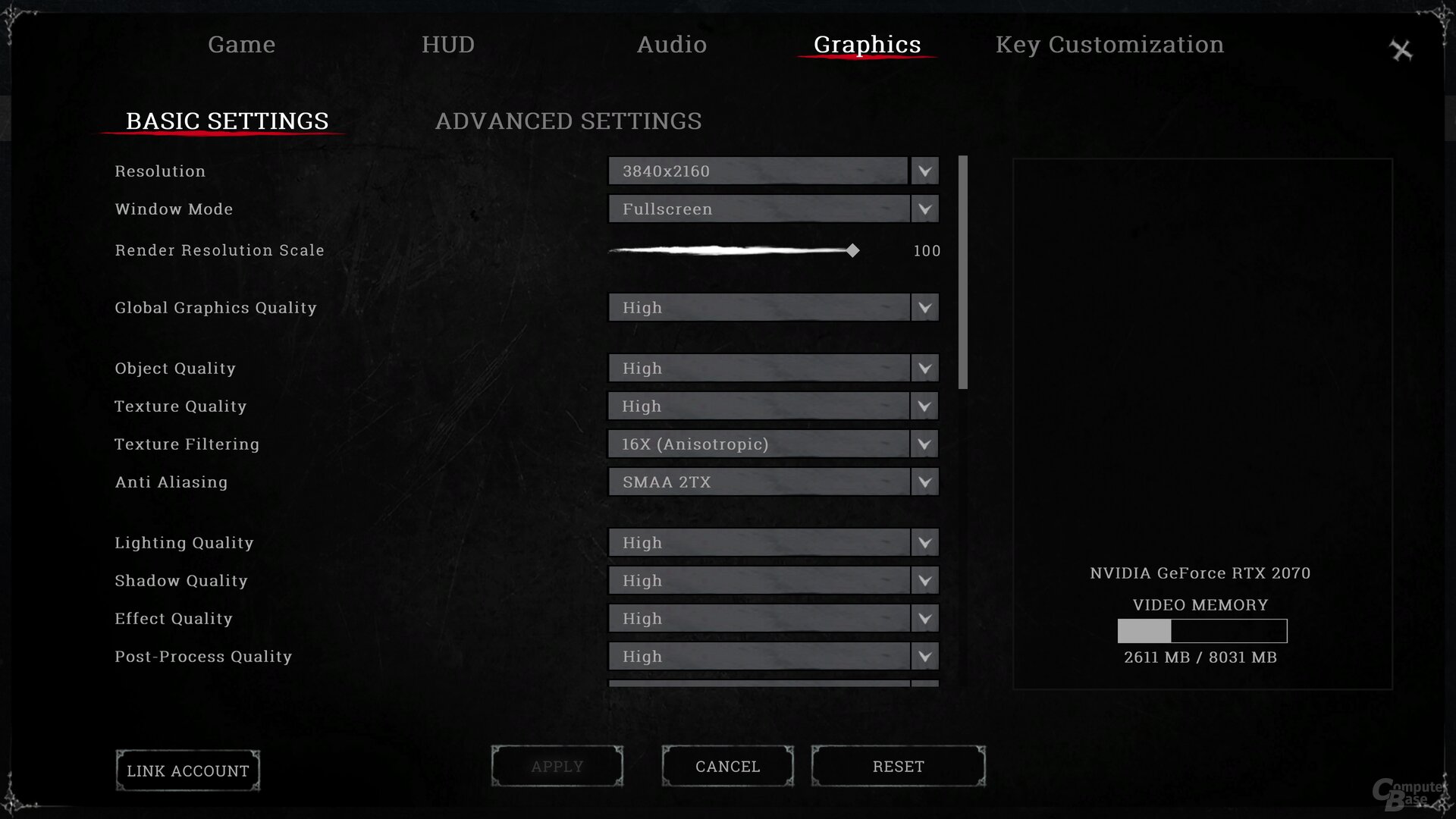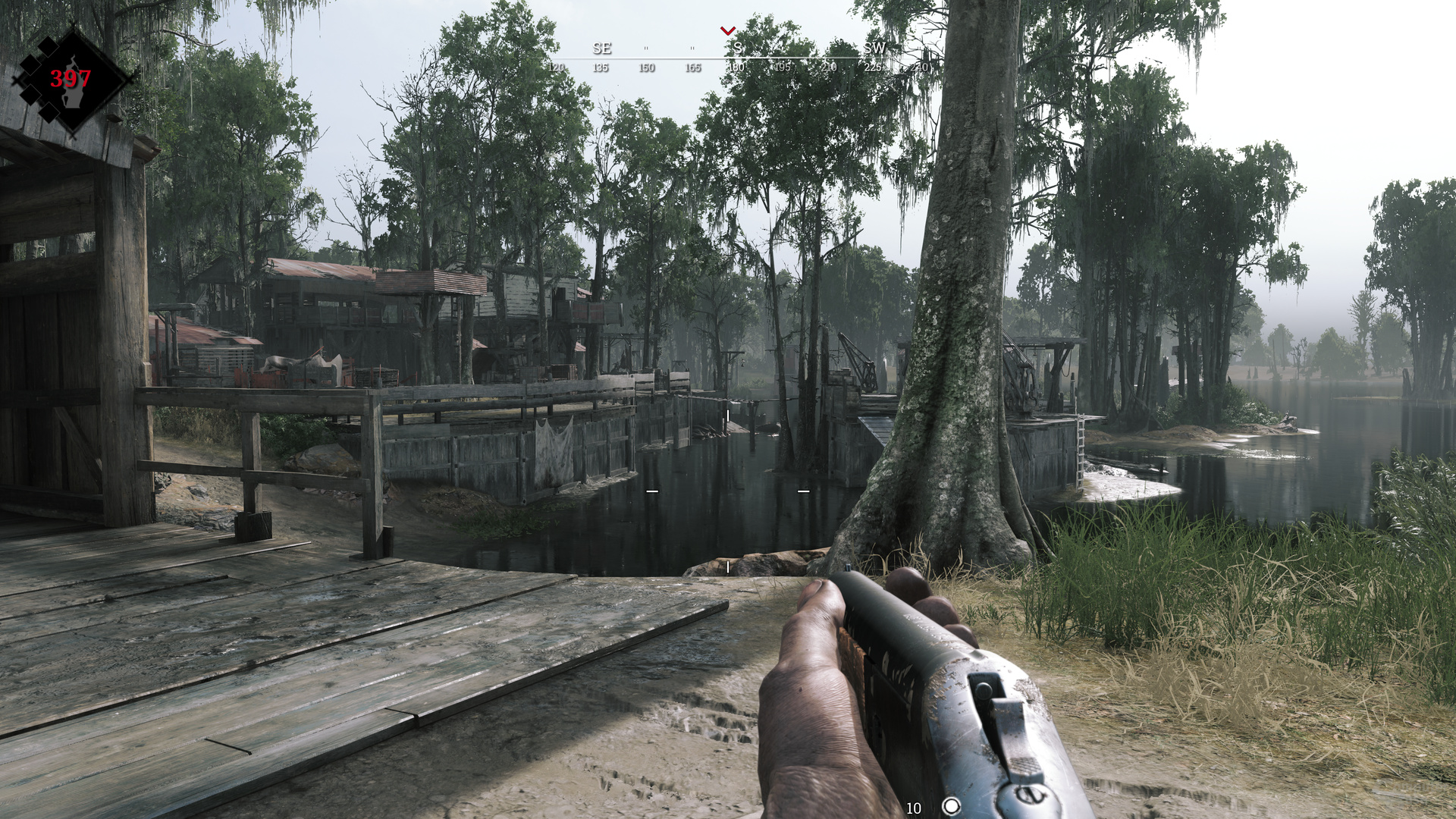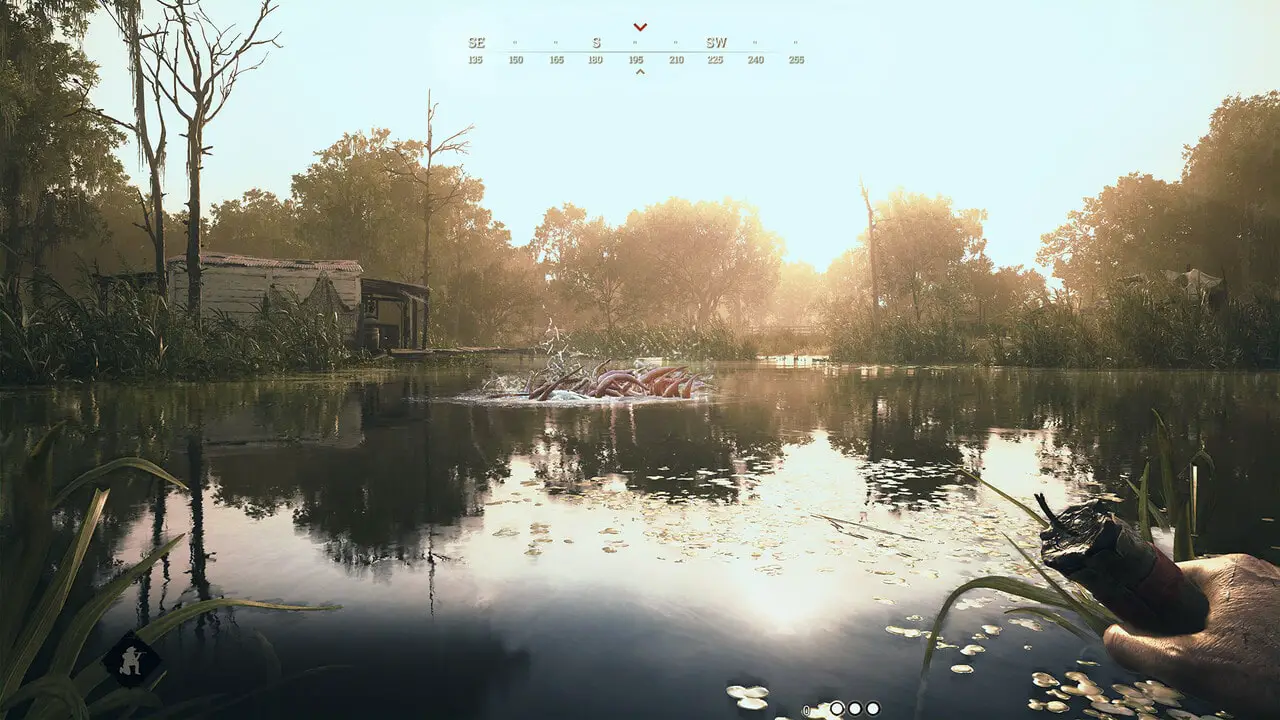– Graphics card benchmarks with the PC version of Hunt: Showdown by Crytek show: The new GPU architectures AMD RDNA and Nvidia Turing have a clear advantage over the predecessors GCN and Pascal. The duel AMD against Nvidia, however, is rather ordinary.
After the last Crysis title, the German developer Crytek had a difficult time at the end of 2013. The studio had to and has evolved. There are no longer any major productions, instead you want to compete for customers with smaller and more unusual games. The Hunt: Showdown, now released from Early Access, is a case in point as a multiplayer shooter with its hunt for monsters and prey. The technology test takes a close look at the technical implementation of the PC version.
Good graphics with many “classic” reflecting lakes
Hunt: Showdown uses the in-house version 5 of CryEngine. After a few seconds it becomes clear that the graphics cannot compete with today’s large calibers, but the game still looks decent. Hunt: Showdown can score on many maps with a large view, chic vegetation and a good atmosphere. For top graphics, however, the game lacks better animations and, above all, a greater level of detail, as has meanwhile found its way into AAA productions.
But there is an optical highlight: the game can display very chic screen space reflections. And this is also used in the game world, because there are a few small lakes in which the surroundings are stylishly reflected. Unlike in Remedy’s new game control (test), for example, the technical implementation is not raytracing. Therefore, the reflections cost significantly less performance, but are not correct for it. Many details are not reflected at all, because it can only reflect what is in the screenspace (in the picture).
And Crytek probably uses only a few or no other tricks for performance reasons to mirror things that are not visible in the picture. For example, Hitman 2 (test) does this, but it costs a lot of performance. This leads to the effect shown in the video. This is the biggest disadvantage of screen space reflections, which in Hunt: Showdown becomes a major optical weak point due to the large water surfaces.
The graphics menu from Hunt: Showdown does not let anyone cheer, but in addition to the classic graphics presets and the individual graphics options, there are also a few comfort functions. For example, the game offers internal upsampling, which can reduce the resolution set in 5 percent increments to up to 50 percent.
Also worth mentioning is an integrated FPS limiter, which is not freely configurable, but does offer various options. So there are the levels 30 FPS, 45 FPS, 60 FPS, 90 FPS, 120 FPS and> 9000 FPS, the latter being practically a deactivated limiter. In addition, the game offers the possibility to add an overlay, which either only shows the frame rate and the ping or additionally the frame times and the information on how many milliseconds the CPU had to render a frame or how long the CPU had to wait for the GPU.
- The Hunt: Showdown graphics menu
image 1 from 2

What is not available, among other things, are sample screenshots for the individual graphics options or corresponding descriptions. On a positive note, each option can be switched without restarting the game or having to wait longer.
Three graphic presets and 3 × anti-aliasing
Hunt: Showdown offers three different presets with the settings “Low”, “Medium” and “High” to adapt the graphics quality to your own computer with just one click. The maximum possible setting is high. Visually, all three steps make a visible difference.
If you switch back from high to medium, you have to accept visible losses in the area coverage, which is much easier. The shadows themselves are also shown more easily. And the red pencil is applied to the textures, which visibly lose their sharpness. Not visible in the pictures, but disturbing in motion is a much more aggressive LOD, which consistently makes objects appear in front of the player at a medium distance. Even if the medium preset looks worse than high, this is a viable way to increase the frame rate.

With low, Hunt: Showdown doesn’t look nice anymore. The shadows then hardly show any details, visibly less tessellation ensures detailed surfaces, the textures are only mud (the latter can be reversed without loss of FPS with enough graphics memory) and the LOD works even more ruthlessly, so that the game with the low Preset looks pretty ugly.
Graphics presets in Hunt: Showdown
- Low-Preset
- Central Preset
- High-Preset
Switching from high to medium increases the frame rate on a GeForce RTX 2070 by 23 percent, while the Radeon RX 5700 XT increases by 27 percent. Low details bring an additional 42 percent boost in both cases.
SMAA 2TX is the anti-aliasing of choice
The options SMAA 1X, SMAA 1TX and SMAA 2TX are available for anti-aliasing. SMAA 1TX and SMAA 2TX both offer a transparent component, so that the vegetation is also smoothed. Since the game represents tons of vegetation, this is a must for a picture as calm as possible. SMAA 2TX looks slightly better than SMAA 1TX. Since the option still hardly costs performance, the highest level should be selected immediately.
In addition to good anti-aliasing, the game also needs high resolution for the best possible image quality. With only 1,920 × 1,080 pixels, the game appears flickering even with SMAA 2TX and the optical details are not worked out properly. Hunt: Showdown looks much better with 2,560 × 1,440 pixels and there is another boost with 3,840 × 2,160 pixels. Then the game is almost flicker-free.
On the next page: GPU benchmarks, frame times and conclusion















